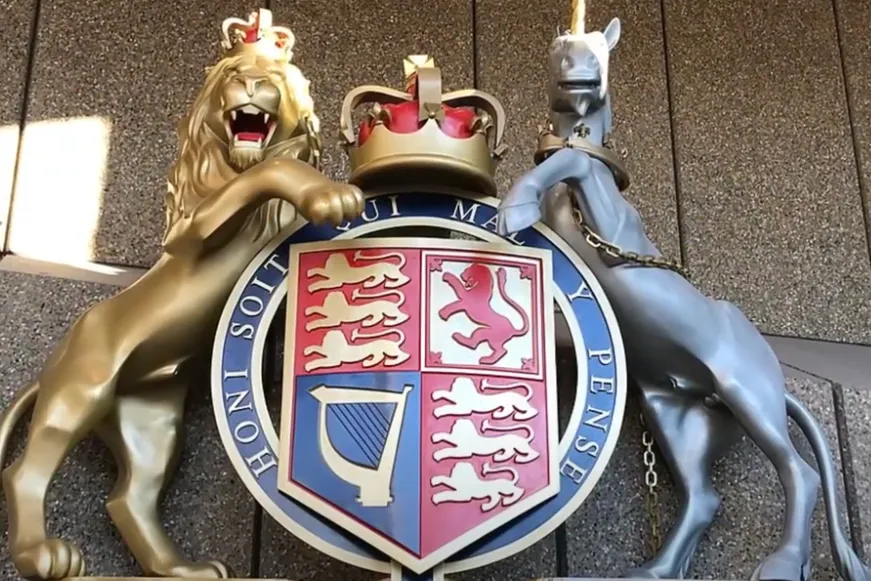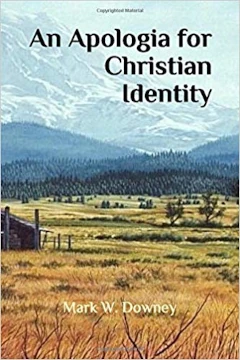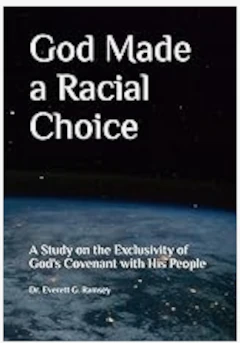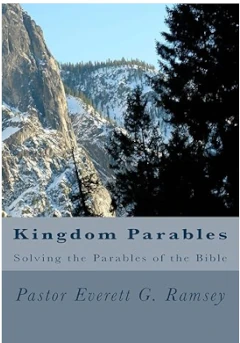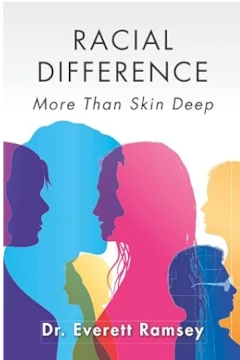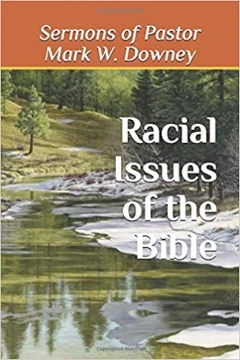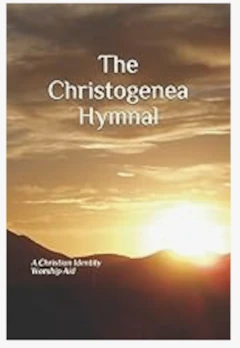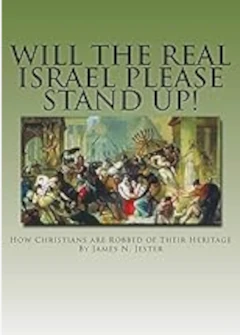God Gives Us a Song
by Jim Jester
June 3, 2018
Scripture Reading: Deuteronomy 32:44-47
“And Moses came and spake all the words of this song in the ears of the people, he, and Joshua the son of Nun. And Moses made an end of speaking all these words to all Israel: And he said unto them, Set your hearts unto all the words which I testify among you this day, which ye shall command your children to observe to do, all the words of this law. For it is not a vain thing for you; because it is your life: and through this thing ye shall prolong your days in the land, whither ye go over Jordan to possess it.”
This lesson could be considered the sequel to my other lesson, “The Handmaiden of God’s Word.” In this sermon, we want to take notice of the time in Israel’s history when God gave them a song.
Perhaps we should begin with this question. What is the music of your church: classic, blended or “let it rock?” Some churches use religious rock, others use Jesus jazz, or holy ho-down. For many, the question of church music is of little consequence since the mantra of most church leaders has become: “Lighten up: our MTV culture demands new methods and new music!” Other churches, perhaps a bit more conservative, but unwilling to alienate anybody; build a church with a little bit of everything, attempting to be inclusive. They ought to be called the Schizophrenic Church. Well, here at our church we just keep it simple and use traditional hymns.
Does God really care what kind of music we sing? Our unequivocal answer – He cares! From the ancient Israelite nation, to the 21st century church, God’s concern for His people’s music has not changed. From Scripture and church history, we find that God’s people have always guarded their music carefully.
Israel’s Rebellion Predicted
Deuteronomy 31:14-18:
“And the LORD said unto Moses, Behold, thy days approach that thou must die: call Joshua, and present yourselves in the tabernacle of the congregation, that I may give him a charge. And Moses and Joshua went, and presented themselves in the tabernacle of the congregation.
And the LORD appeared in the tabernacle in a pillar of a cloud: and the pillar of the cloud stood over the door of the tabernacle. And the LORD said unto Moses, Behold, thou shalt sleep with thy fathers; and this people will rise up, and go a whoring after the gods of the strangers of the land, whither they go to be among them, and will forsake me, and break my covenant which I have made with them. Then my anger shall be kindled against them in that day, and I will forsake them, and I will hide my face from them, and they shall be devoured, and many evils and troubles shall befall them; so that they will say in that day, Are not these evils come upon us, because our God is not among us? And I will surely hide my face in that day for all the evils which they shall have wrought, in that they are turned unto other gods.”
Moses is about to die soon and God has commissioned Joshua to carry out the mission of taking the Promised Land. Yahweh told Moses that Israel would forsake Him and break the Covenant. As a result, God would forsake them and they would face much tribulation.
This is the setting and background for what the God of Israel is about to do to prepare His people for the future. He knows what the future holds; and we, now in the future, can see many of the events and calamities that have befallen us as the people of God.
These last few chapters of Deuteronomy are nearly all prophetic of future events relating to the people of God.
The Last Words of Moses
The last words a person speaks before he or she dies are significant. The last words of Moses are no exception; Moses’ words were crucial to Israel’s survival.
“They are not just idle words for you – they are your life. By them you will live long in the land you are crossing the Jordan to possess.” – Deuteronomy 32:47, NIV
Incredibly, the context for these life-changing words is found in a song. And not just any song, for in Deuteronomy 31:19-22, we read that this song was taught directly to Moses by Yahweh Himself:
“And now write the words of this song, and teach it to the children of Israel, and ye shall put it into their mouth, that this song may witness for me among the children of Israel to their face. For I will bring them into the good land, which I sware to their fathers, to give to them a land flowing with milk and honey: and they shall eat and be filled and satisfy themselves; then will they turn aside after other gods, and serve them, and they will provoke me, and break my covenant. And this song shall stand up to witness against them; for they shall not forget it out of their mouth, or out of the mouth of their seed; for I know their wickedness, what they are doing here this day, before I have brought them into the good land, which I sware to their fathers. And Moses wrote this song in that day, and taught it to the children of Israel.” – Brenton, LXX
This is the only time that we know of where God taught anyone a piece of music! After learning this beautiful song, Moses then proceeded to teach it to the entire nation of Israel. The words to this song are in Deuteronomy chapter 32. Surely, this was one of the most unusual moments in history.
God intended this to be no ordinary moment. His song was both poetic – and prophetic! If the nation of Israel ignored its words, God said He would strip Israel of her power. Clearly, God intended this song to be Israel’s National Anthem – a song that would become the “lifeblood” of the nation. Sing this song and choose life; neglect this song and face certain punishments!
Furthermore, I wonder what that tune sounded like. We can only surmise. But hearing a tune will usually bring to memory some lyrics. God said that Israel would “not forget” this song. A poetic text is easier to remember – and even more so if sung. Adam Clarke notes:
“Things which were of great importance and of common concern were, among the ancients, put into verse, as this was found the best method of keeping them in remembrance, especially in those times when writing was little practiced. Even prose was sometimes sung. The history of Herodotus was divided into nine books, and each inscribed with the name of one of the Nine Muses, because these books were anciently sung. Homer is reported to have sung his poems through different Greek cities. Aristotle observes that anciently the people sung their laws. And Cicero observes that it was a custom among the ancient Romans to sing the praises of their heroes at the public festivals. This was the case among the northern inhabitants of Europe, particularly in Ireland and Scotland; hence the Gaelic poetry of Ossian and others.”
The Law
This song was also God’s Law, for beginning with verse 24, it says:
“And it came to pass, when Moses had made an end of writing the words of this law in a book, until they were finished, that Moses commanded the Levites, which bare the ark of the covenant of the LORD, saying, take this Book of the Law, and put it in the side of the ark of the covenant of the LORD your God, that it may be there for a witness against thee.” – Deut. 31:24-26, KJV
Moses, over a period, wrote God’s laws in a book (scrolls) and on this occasion, his Book of the Law was finished and placed beside the ark for safekeeping. Commenting on this verse:
“The song finished and put into the ark of covenant. The book commenced before Exodus 17:14, gradually increased and now finished, i.e., in full, wholly complete. ‘In the side’ (Deut. 31:26) for greater security and reverence. Only tables of stone in the ark (1Ki. 8:9).” – Preacher’s Homiletical
So, the Book of the Law was placed close to the ark of the covenant, not inside it. Only the tables of stone were inside the ark.
Continuing with verse 27:
“For I know thy rebellion, and thy stiff neck: behold, while I am yet alive with you this day, ye have been rebellious against the LORD; and how much more after my death?
Gather unto me all the elders of your tribes, and your officers, that I may speak these words in their ears, and call heaven and earth to record against them. For I know that after my death ye will utterly corrupt yourselves, and turn aside from the way which I have commanded you; and evil will befall you in the latter days; because ye will do evil in the sight of the LORD, to provoke him to anger through the work of your hands.” – Deut. 31:27-29, KJV
Outline of the Song of Moses:
- What God had done in the past – Deut. 32: 7-14
- How they would rebel in the future – Deut. 32:5-6, 15-18
- How God would punish them – Deut. 32:19-33
- How God’s mercy is shown to them – Deut. 32:34-43
Upon pondering what this song may have sounded like, I suggest it may have been much like a symphony, at least judging by the words of the song (some of which we will see).
I will begin with my analysis, but first let us consider a little historic background concerning music in the church.
Historic Perspective
Both sacred and secular music in the European classical tradition were influenced by biblical principles, particularly in their connection to monody, which made them melody oriented. The tradition of melody, harmony and rhythm that has been carried down through the centuries of church music, is the result of a long history of music composed to the glory of God. The music in our hymnbooks today (for the most part) reflect this classical tradition.
Many Christians defend Rock music (and other genres), but it really has no defense, according to history. Schirmer says,
“Jazz and other forms of popular music seem to be stranded with no direct historical linkage to religious or church music of the European tradition.”
Since this new popular music is “stranded,” i.e., it stands alone in history and has never been used before; I would ask, then why use it?
When we examine history, we find that Plainsong and parallel organum (In medieval music: a form of early polyphony based on an existing plainsong.) started a tradition of sacred music resulting in the style of modern classical church music. The Plainsong tradition was built on the principle of rhythm tied to the words, not words tied to the rhythm, as is modern “pop” music. Sacred and secular music of the medieval period were generally rhythmically free. However, secular music soon became based upon dance rhythms.
The mainstream of southern gospel music is a style of playing and singing utilizing moderate jazz techniques. This “Swing” or “big beat” in music began about the turn of the century in the “red light” district of New Orleans (and the “tin pan alley” of New York City) – can you see the Black and Jewish influence? Its purpose was to make fun of the White man’s sexual norms and promote immorality. Ever since then, the popular music of America has followed this trend.
Biblically, we find that music was not based upon rhythm: drums were not found in the temple and cymbals were not used for rhythmical purposes. When we study music in the Bible, we are forced to the conclusion that there is a doctrine on music. Do we dare to ignore God’s revelation on the art of music?
The bottom line is that the church is to edify, stimulate spiritual growth and be a means of communion with fellow believers; not put on a Christian minstrel show to entertain.
Analysis of the Song of Moses
In a Symphony, you have a number of “movements,” i.e., sections of music of different pace, tenor, genre, and style. In other words, some parts of the music are uplifting, triumphant and glorious, while other parts are soft, peaceful, somber, or reverent.
The lyrics of a song should match the style of music being used. This is more important than most people realize. For example: a song with a happy message should also have a happy tune to go with it. Or, a sad song should also have sad sounding music to match it. A songwriter should try to prevent any incongruity between the lyrics and the music. Ideally, the message of the lyrics should at least closely resemble the genre of the music used.
With this in mind, it is my opinion that the Song of Moses was likely set to a Symphony of God; as follows.
Outline of the Song of Moses:
Theme: Musical Genre:
- What God had done for Israel: Victorious, Joyful
- How Israel would rebel: Discord, Conflict
- How God would punish Israel: Distress, Woe, Sadness
- How God’s mercy is shown to Israel: Peace, Harmony, Joy
God did not want Israel to forget this song, or His Law, which was embodied into the song that God taught to Moses. Let us look at some of the key verses in this song to see what our God wanted us to remember:
1) What God had done in the past (Deut. 32: 7-9, 12),
“Remember the days of old, consider the years of many generations: ask thy father, and he will shew thee; thy elders, and they will tell thee. When the most High divided to the nations their inheritance, when he separated the sons of Adam, he set the bounds of the people according to the number of the children of Israel. For the LORD'S portion is his people; Jacob is the lot of his inheritance.
So the LORD alone did lead him, and there was no strange god with him.”
What principle do we see? Separation/exclusiveness; victory/joy. Can this apply to any other race? The black race? The Chinese?
2) How Israel would rebel in the future (Deut. 32:18),
“Of the Rock that begat thee thou art unmindful, and hast forgotten God that formed thee.”
What do we see? They forgot their heritage, i.e., the Law of the marriage Covenant, which they vowed to obey. God had no choice but to divorce them. Remember how they were lost, without hope, and without God in the world (Eph. 2:12)? Can this be said of any other race? Can it be said of the jews? No, they claim that they have always been loyal.
3) How God would punish them (Deut. 32:23-25),
“I will heap mischiefs upon them; I will spend mine arrows upon them. They shall be burnt with hunger, and devoured with burning heat, and with bitter destruction: I will also send the teeth of beasts upon them, with the poison of serpents of the dust. The sword without, and terror within, shall destroy both the young man and the virgin, the suckling also with the man of gray hairs.”
What do we see here? God’s punishment for sin; and much distress.
4) How God’s mercy is shown to them (Deut. 32:39, 43),
“See now that I, even I, am he, and there is no god with me: I kill, and I make alive; I wound, and I heal: neither is there any that can deliver out of my hand.
Rejoice, O ye nations, with his people: for he will avenge the blood of his servants, and will render vengeance to his adversaries, and will be merciful unto his land, and to his people.”
What do we see here? Hope, forgiveness, restoration, and peace. Who is God merciful to? His people. And, “His people” is defined as who? Jacob/Israel – only he was God’s inheritance (vs. 9).
I did a search in eSword of the phrase:
- “God of the Hebrews” – 6 times
- “God of Abraham” – 17 times
- “God of Isaac” – 8 times
- “God of Jacob” – 25 times
- “God of Israel” – 203 times
- “God of Abraham, Isaac, and Jacob” (partial match) – 144 times
A grand total of 403 – so over 400 times God calls Himself by a racial name! Not once is there a “God of Esau” mentioned. Not once is there a “God of all people” mentioned. This promise of God cannot apply to any other people than Israel.
This song was Israel’s health as a nation:
1) It taught them of the past and their exclusiveness.
2) It taught them their sin of rebellion and forsaking of God’s law.
3) It taught how much distress would come in punishment – the lesson of reaping what you sow.
4) It taught them of God’s mercy if they would repent; and that it (the Law) would sustain them in times of trouble.
Once again, Moses’ words were crucial to Israel’s survival.
“They are not just idle words for you – they are your life. By them you will live long in the land you are crossing the Jordan to possess.” – Deuteronomy 32:47, NIV
Speaking of life, as Jesus said, “that they might have it more abundantly” (Jn. 10:10), let us delve into the health issue.
Music, Frequencies and Healing
There is a relationship between music and health – all kinds of health: spiritual, emotional and physical. But, what about the so-called “Solfeggio Frequencies”?
It is claimed by some that certain frequencies have beneficial healing effects. This may be theoretically true, but how does one really know which type of frequency to use for what conditions; and, is there enough scientific testing to prove such treatments actually work?
There are people who work with methods of music therapy or frequency therapy, but they do not call them by any particular name, such as “Solfeggio.” Some examples:
- Dr. Raymond Rife’s “machine” (http://energyfanatics.com/2014/03/04/rife-frequency-healing-machine-scam-or-real/)
- The “Energy Cleaner” (http://www.thelibertyman.com/energy_cleaner.shtml)
- Dr. Sherry Edward’s “Sound Health Options” (https://www.soundhealthoptions.com/bioacoustic-biology).
The Claim of New Age Sites
You will find that those who use the so-called “Solfeggio Frequencies” are mostly of the New Age types. They say as follows; and I will comment.
The 432Hz tuning was unanimously approved at the Congress of Italian musicians in 1881 and recommended by the physicists Joseph Sauveur and Felix Savart as well as by the Italian scientist Bartolomeo Grassi Landi. [non-existent at Wiki]
In contrast, the frequency chosen in London in 1953 as the worldwide reference frequency and which all music today has been tuned to, has come to be defined as “disharmonic” [By whom? And which is really harmonic?] because it has no scientific relationship to the physical laws that govern our universe.
Natural Healing with 432Hz
432Hz is the harmonic intonation of nature. [By whose authority?]
According to the above information, playing and listening to music that has been tuned to 432Hz would make your body, and the organic world that surrounds it, resonate in a natural way. This would fill you with a sense of peace and well-being, regardless of the kind of song chosen to play or listen to. [This should make you wonder]
Opening your ears for music that has been tuned to the “scientific” 432Hz frequency would benefit the entire planet and everyone who lives on it, while listening to music tuned to the “disharmonic” 440Hz frequency does harm by causing stress, negative behaviors and unstable emotions. [Really?]
Listening to 432Hz music resonates inside your body, releases emotional blockages, and expands consciousness. 432Hz music allows you to tune into the knowledge of the universe around us in a more intuitive way. [Hmmm, what is that about?]
The 528Hz tone alone is associated with ‘DNA Repair‘:
According to Dr. Leonard Horowitz, [a Jew] the 528 Hz frequency has the ability to heal damaged DNA. At the time I am writing this, there is not enough scientific research available on the subject. What we know for sure [Really?] is that Dr. Horowitz learned the theory that 528 frequency repairs [If it is “theory,” how do we know it “repairs.”] damaged DNA from Lee Lorenzen, [non-existent at Wiki] who was using the 528 frequency to create clustered water. [an ineffective technology]
What are the “Solfeggio frequencies?”
Solfeggio frequencies make up the ancient 6-tone scale thought to have been used in sacred music, including the beautiful Gregorian Chants. The chants and their special tones were believed to impart spiritual blessings when sung in harmony. Each Solfeggio tone is comprised of a frequency to balance your energy and keep your body, mind and spirit in perfect harmony. Because the music held mathematic resonance, the original frequencies were capable of spiritually inspiring mankind to be more god-like.
The main six Solfeggio frequencies are:
396 Hz – Liberating Guilt and Fear
417 Hz – Undoing Situations and Facilitating Change
528 Hz – Transformation and Miracles (DNA Repair)
639 Hz – Connecting/Relationships
741 Hz – Expression/Solutions
852 Hz – Returning to Spiritual Order
They were thought to have been used in over 150 Gregorian Chants. [But since there were no electronic measuring devices, back then, to measure frequency, no one knows for sure.]
Origins (from Wikipedia)
The origin of the Solfeggio scale can be traced back to a Medieval hymn to John the Baptist. The hymn has this peculiarity, that the first six lines of the music commenced respectively on the first six successive notes of the scale, and thus the first syllable of each line was sung to a note one degree higher that the first syllable of the line that preceded it.
In eleventh century Italy, Benedictine monk and music theorist, Guido of Arezzo (c.991–1050) developed a six-note ascending scale that went as follows: ut, re, mi, fa, sol, la. It was used by singers to learn chants and songs more easily. A seventh note, "si" was added shortly after. Today we know the scale as, Do-Re-Mi-Fa-So-La-Ti. The names were taken from the first verse of the Latin hymn Ut queant laxis (by Paulus Diaconus), where the syllables fall on their corresponding scale degree.
It is not known who wrote the melody. Guido possibly composed it, but he more likely used an existing melody. A variant of the melody appears in an eleventh-century musical setting of Horace's poem Ode to Phyllis recorded in a manuscript in France.
Guido of Arezzo is known as the father of modern music.
“Ut” was changed in the 1600s in Italy to the open syllable “Do”, at the suggestion of the musicologue Giovanni Battista Doni (based on the first syllable of his surname), and “Si” (from the initials for “Sancte Iohannes”) was added to complete the diatonic scale. In Anglophone countries, “Si” was changed to “Ti” by Sarah Glover in the nineteenth century so that every syllable might begin with a different letter. “Ti” is used in tonic sol-fa (and in the famed American show tune “Do-Re-Mi”).
From Jamie Buturff, musician:
At the time of Guido of Arezzo, no scientific measurement tools exist, nor were philosophers and “scientists” much aware of the exact pitch (frequency) of tones. Guido of Arezzo could not have known the frequencies represented by his “Do, Re, Mi.” It was not until the “Electrical Era” when accurate measurements could be done regarding frequencies.
In some online articles, you can find information about the “Solfeggio Frequencies” and “432 Tuning” all mixed together, as if they are the same concept. Those who have read much of this may have noticed that Dr. Horowitz sets A4 to 444Hz, not 432Hz. How can one have it both ways? There isn’t a single tuning system where multiple frequencies are used for a single tone. A4 cannot be both 444Hz and 432Hz at the same time. This is evidence that we are considering two different things at the same time: one is sound frequency and the other is electro-magnetic frequency.
Many sites quote Nikola Tesla to justify the use of 432Hz Tuning. He said, “If you only knew the magnificence of the 3, 6 and 9, then you would hold a key to the universe.” Then they say that the 3, 6, and 9 are the fundamental root vibrations of the “ancient Solfeggio frequencies;” which is not true; nor are they ancient.
Tesla was not speaking of sound, but of electro-magnetic radiation. Tesla was not a sound engineer or acoustician; neither is there any documentation that he meant sound radiation. Everyone knows he experimented with electrical energy. Electromagnetic waves and sound waves are not the same thing. Their vibratory nature cannot be exchanged one on one.
If not sound frequencies, then what are these numbers?
According to Jamie Buturff, the frequencies promoted by Dr. Joseph Puleo and Leonard Horowitz are misinterpreted variations on Marko Rodin’s (inventor of the Rodin Coil) Family Number Groups of 1, 7, 4 and 2, 8, 5 and 3, 6, 9. These Groups are actually Nodes, not Notes (as used in tones), of how energy travels, and not actual sound frequencies. “Nodes create the geometry, the shell, they create the outline for which vibration can then manifest.” – Jamie Buturff [Guitar & Nodes example]
Most of those who support the 432Hz tuning theories of Dr. Horowitz (the Jew) are New Agers and some of them are not even musicians.
It is no surprise then, that most musicians reject the 432 tuning of Horowitz because of the disharmonic chords it strikes. [Example tones: Pythagoras or Solfeggio – 2 Tone Scales & 2 Organ Chords]
What lesson can we learn from this demonstration? Where is all the disharmony of the world coming from? All we need do is look to the Jew! They are the discordant element causing all the conflict in the world.
“Nazis”
Horowitz also has come up with a “conspiracy theory” about 440Hz and the German Third Reich. According to many online sources about 432Hz tuning and “Ancient Solfeggio Frequencies,” Joseph Goebbels is singled out as “the man behind the implementation of A4=440Hz as the international Concert Pitch.” But was he really?
Before Concert Pitch 440Hz became the manufacturing standard for instruments, there was no international standard pitch. All through the 1800’s, various countries used many different pitches, some very close to 440Hz.
- In 1917, the American Federation of Music accepted 440Hz.
- In 1922, the U.S. Standards Bureau passes A=440Hz as a standard of concert pitch.
- In 1926, the American music industry reached an informal standard of 440Hz. Many already used it before, and nearly all were using it for instrument manufacturing (no documentation available).
- In 1939, the majority of attending members at an international conference in London supports A4=440Hz (no documentation available).
- In 1953, the International Organization for Standardization (London?) promotes the International Concert Pitch A4=440Hz (no documentation available).
- Finally, in 1975, the International Organization for Standardization affirms the International Concert Pitch A4=440Hz under ISO 16:1975.
Of interesting note, the Baroque period (1600-1760) pitch of 415Hz is 101 cents or 1.01 semitone below the present 440Hz standard. In other words, Concert Pitch 440Hz is 415Hz transposed a semitone up. So the tone frequency of 440Hz has likely already “sounded” approximately 400 years ago as A#.
440Hz was a common standard for building instruments all over the world before 1900. The only countries in Europe (before WWII) that did officially build instruments of another pitch, that of 435Hz, were France, Belgium and Germany. In Germany, instruments were built for both 435Hz and 440Hz.
This is ample proof that the theory of Hitler’s Third Reich being responsible for the 440Hz Concert Pitch (as if to have some kind of evil influence upon people), and using the myth to proclaim the validity of 432Hz tuning over the 440Hz, is just plain wrong. 440Hz had been in use long before Hitler was even born (20 April 1889).
Summary
The Horowitz/Puleo theory of 432Hz tuning and what they call the “ancient Solfeggio Frequencies” is a flawed pseudo-scientific, pseudo-historical and pseudo-musicological concept:
- It is the wrong usage of the term “ancient” – The proclaimed sources do not match the time frame to be called ancient.
- It is the wrong usage of the term “Solfeggio” – A complete mismatch between concepts and theories.
- The proclaimed meaning of the syllables cannot be confirmed. Horowitz does not provide any proper evidence to support his own claim.
- The proclaimed frequencies do not match any temperament, not even known temperaments of ancient times. If Horowitz/Puleo has really discovered an unknown ancient temperament, then why did they not provide the evidence?
- These frequencies could not have been known to Guido d’Arezzo when he created Solfeggio didactic system. The tools to measure and analyze frequencies did not yet exist.
- Horowitz contradicts himself many times, particularly with his usage of musicological terms. He does not have a proper understanding of music theory. Most obvious is his claim to use C5=528Hz that contradicts another claim that lists Mi=528Hz. This is only possible when the “Moveable-Do” system is used. But in that case a specific tone name (C, D, E, etc.) and pitch frequency of those tones cannot “set” as “standard.” The Moveable-Do system is a “relative” system, not an exact system.
- Horowitz/Puleo did not “discover” these numbers himself. The front-runner for the last couple decades concerning the numbers is Marko Roden (family number groups), as related to Vortex Mathematics.
Jamie Buturff concludes:
“Musicologically, mathematically and historically, the ‘Ancient Solfeggio Frequencies’ (more properly termed the Solfeggio Ratio or Scale) tuning concept is nothing more than a myth, a figment of Horowitz’ and Puleo’s imagination. Whatever these numbers are, they are not the so-called Ancient Solfeggio Frequencies. Perhaps the most logical way to name those numbers is the Rodin Family Number Groups.” – Jamie Buturff
Conclusion
Fast forward from Moses’ day to the present. Once again, God’s people are in great peril – and we find music in the midst of a great struggle – the struggle of Genesis 3:15. Will music make a difference? It will, if it is praise from our hearts. Psalm 22:3 (KJV) states that God “inhabits the praises of Israel.” The RSV says, “Yet thou art holy, enthroned on the praises of Israel.”
If as a church, we are drawn into the battle between us, the anointed of God, and the anti-Christ jewish powers, we can find hope in our God who promised never to forsake us. When things look hopeless and we face White genocide, as did our ancient king Jehoshaphat, we can find victory through Jesus our King.
The account is in II Chronicles chapter 20, where Jehoshaphat and Judah were about to be attacked by the Moabites and company. The king sought the Lord and proclaimed a fast throughout Judah; and he prayed.
Jehoshaphat’s Prayer
4-12. O LORD God of our fathers, art not thou God in heaven? and rulest not thou over all the kingdoms of the heathen? and in thine hand is there not power and might, so that none is able to withstand thee? Art not thou our God, who didst drive out the inhabitants of this land before thy people Israel, and gavest it to the seed of Abraham thy friend for ever? And they dwelt therein, and have built thee a sanctuary therein for thy name, saying, If, when evil cometh upon us, as the sword, judgment, or pestilence, or famine, we stand before this house, and in thy presence, (for thy name is in this house,) and cry unto thee in our affliction, then thou wilt hear and help. And now, behold, the children of Ammon and Moab and mount Seir, whom thou wouldest not let Israel invade, when they came out of the land of Egypt, but they turned from them, and destroyed them not; Behold, I say, how they reward us, to come to cast us out of thy possession, which thou hast given us to inherit. O our God, wilt thou not judge them? for we have no might against this great company that cometh against us; neither know we what to do: but our eyes are upon thee.
Jehoshaphat’s Exhortation and Victory
Jehoshaphat encouraged the people and appointed singers to march before the army.
20-21. Jehoshaphat stood and said, Hear me, O Judah, and ye inhabitants of Jerusalem; Believe in the Lord your God, so shall ye be established; believe his prophets, so shall ye prosper. And when he had consulted with the people, he appointed singers unto the Lord, and that should praise the beauty of holiness, as they went out before the army, and to say, Praise the Lord; for his mercy endureth for ever.
22. And when they began to sing and to praise, the Lord set ambushments against the children of Ammon, Moab, and mount Seir, which were come against Judah; and they were smitten.
27-30. Then they returned, every man of Judah and Jerusalem, and Jehoshaphat in the forefront of them, to go again to Jerusalem with joy; for the Lord had made them to rejoice over their enemies. And they came to Jerusalem with psalteries and harps and trumpets unto the house of the Lord. And the fear of God was on all the kingdoms of those countries, when they had heard that the Lord fought against the enemies of Israel. So the realm of Jehoshaphat was quiet: for his God gave him rest round about.
Yahweh our God delivered them from the threat!
Question: Who are the descendants of Ammon, Moab, and Mount Seir today? They are known as the “Jews.” They are our greatest enemy today! Not “terrorism,” not China, not Russia, etc. The Jews – the IsraLIE state!
Our praise, through song, could very well give us the edge in defeating our enemy. We will use God glorifying music – music that contains the laws of Yahweh our God. God’s Law is our health and preservation as a nation/race. Once again, Moses’ last words were crucial to Israel’s continued prosperity and existence. “They [the words of this law] are not just idle words for you – they are your life.” – Deuteronomy 32:47, NIV
May Yahweh give you a song to help you in the trials of life.


